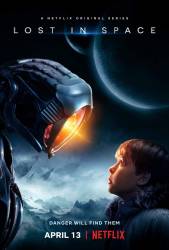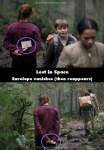Danger, Will Robinson - S1-E10
Plot hole: At the end, when Maureen is searching for John in orbit, she only radios him after Will sees him clinging to the floating wreckage. Before that, she only used sensors aboard Jupiter to try and locate him. She makes no attempt at radio contact for any survivors, which would have quickened the rescue. John can also radio her back, but he did not attempt to call for help.
Suggested correction: The suit radios are fairly short range. This is seen on a number of occasions, such as when they need an extension antenna when stuck in the tar to contact others. The distances in space between the damaged Jupiter and Jupiter 2 are huge, and much further than the distance from the chariot stuck in tar back to Jupiter 2.






